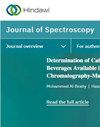结合中心网和SBAS-InSAR的黄河三角洲地表沉降探测、监测与分析
IF 2.1
4区 化学
Q4 BIOCHEMICAL RESEARCH METHODS
引用次数: 0
摘要
长期的工业活动容易造成地表沉陷,破坏地面设施和当地生态环境。地表沉降监测与分析对预防潜在灾害具有重要意义。中国黄河三角洲地表类型复杂,工业活动较多,因此有必要对该地区地表沉降进行监测。小基线子集InSAR (SBAS-InSAR)能够以毫米级精度监测地表沉降,但处理宽图像(Sentinel-1)需要较长时间,且受大气误差影响严重。为了避免这些限制,我们构建了一种结合CenterNet网络和SBAS-InSAR (CNSBAS-InSAR)的方法。首先,利用CenterNet网络从两幅SAR卫星图像形成的宽差干涉图中自动检测塌陷区,确定塌陷区位置;然后,对探测到的多个塌陷区进行SBAS-InSAR监测。最后,得到了小尺度沉降结果。本研究基于2018年1月10日至12月24日采集的24幅Sentinel-1A卫星图像,对黄河三角洲9个沉陷区进行了探测。其中三个有长期地表沉降。它们分别位于沾化区、仙河镇和红光村。本文主要对这三个方面进行分析。沾化区、仙河镇和红光村的最大沉降速率分别为−135.21 mm/a、−330.91 mm/a和−209.68 mm/a。此外,分析表明,沾化区的降水可以有效减缓该地区的沉降速度。鲜河镇的沉陷严重威胁着蜀港高速公路的安全。红光村的下沉造成了建筑物的安全隐患。研究结果表明,CNSBAS-InSAR方法对塌陷区的监测是可靠的,可为黄河三角洲地区的局部建设和保护提供参考。本文章由计算机程序翻译,如有差异,请以英文原文为准。
Detecting, Monitoring, and Analyzing the Surface Subsidence in the Yellow River Delta (China) Combined with CenterNet Network and SBAS-InSAR
Long-term industrial activities tend to cause surface subsidence and damage to ground facilities and local ecological environment. Monitoring and analyzing surface subsidence is of great significance to prevent potential disasters. The surface type of the Yellow River Delta in China is complex and there are many industrial activities, so it is necessary to monitor the surface subsidence in this area. Small Baseline Subset InSAR (SBAS-InSAR) can monitor the surface subsidence with millimeter-level accuracy, but it takes a long time to process wide images (Sentinel-1) and is seriously affected by atmospheric errors. To avoid these limitations, we constructed a method combining the CenterNet network and SBAS-InSAR (CNSBAS-InSAR). Firstly, the CenterNet network is used to automatically detect the subsidence areas from the wide differential interferogram formed by two SAR satellite images and determine the location of the subsidence area. Then, the SBAS-InSAR monitoring is performed on the detected multiple subsidence areas. Finally, the small-scale subsidence results are obtained. In this study, based on 24 Sentinel-1A satellite images acquired from 10 January 2018 to 24 December 2018, nine subsidence areas in Yellow River Delta were detected. Three of them had long-term surface subsidence. They were located in Zhanhua District, Xianhe Town, and Hongguang Village, respectively. This paper focuses on analyzing these three areas. The maximum subsidence rate of Zhanhua District, Xianhe Town, and Hongguang Village were −135.21 mm/a, −330.91 mm/a, and −209.68 mm/a, respectively. In addition, the analysis showed that precipitation in the Zhanhua District could effectively slow down the subsidence rate of the area. The subsidence of Xianhe Town threatened the safety of the Shugang Expressway. The subsidence of Hongguang Village caused the safety risks of buildings. The results of this study prove that CNSBAS-InSAR method is reliable for monitoring subsidence areas and it can provide a reference for local construction and protection of Yellow River Delta.
求助全文
通过发布文献求助,成功后即可免费获取论文全文。
去求助
来源期刊

Journal of Spectroscopy
BIOCHEMICAL RESEARCH METHODS-SPECTROSCOPY
CiteScore
3.00
自引率
0.00%
发文量
37
审稿时长
15 weeks
期刊介绍:
Journal of Spectroscopy (formerly titled Spectroscopy: An International Journal) is a peer-reviewed, open access journal that publishes original research articles as well as review articles in all areas of spectroscopy.
 求助内容:
求助内容: 应助结果提醒方式:
应助结果提醒方式:


